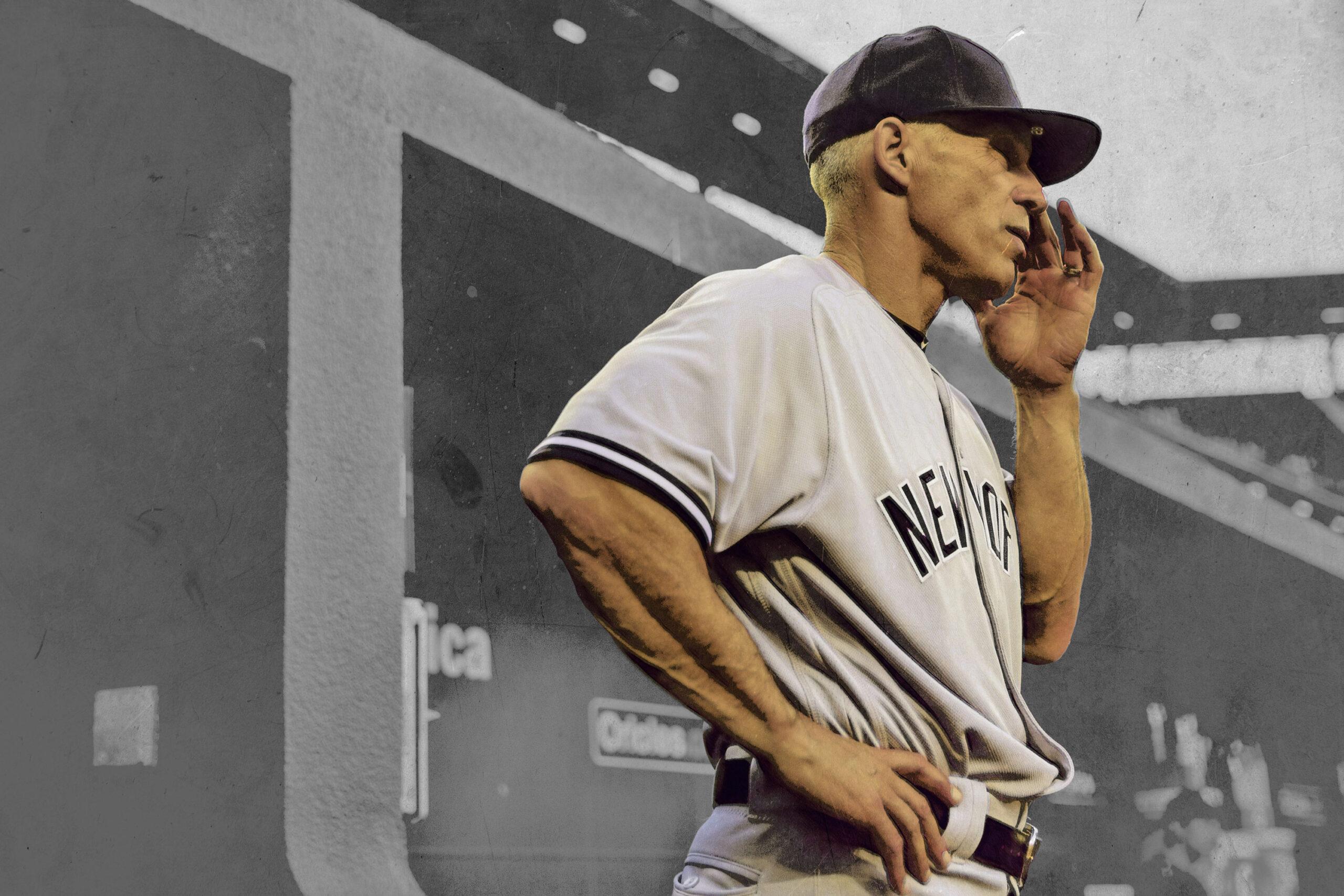
On Thursday morning, news broke that longtime Yankees manager Joe Girardi will not return to manage the team in 2018. Although in recent weeks some had speculated that Girardi, whose contract was up, might want to do something different after spending a decade in the dugout in New York, it appears that the decision to part ways was ultimately the Yankees’. Shortly after Girardi announced that the franchise had decided not to bring him back for an 11th season, Yankees general manager Brian Cashman—whose own expiring contract is virtually guaranteed to be renewed—released a statement thanking Girardi for his pinstriped service and acknowledging that the team (reportedly per Cashman’s recommendation) had cut ties.
Girardi, who won a Manager of the Year Award with the Marlins in 2006—and was fired that October for his trouble—never took home the same honor with the Yankees, whose high payroll and history of success make it difficult for a team to far surpass expectations. But Girardi’s 10-year record with the team was, if not Torre-esque, still routinely successful, producing a .562 winning percentage, a 2009 World Series title, six postseason appearances—and, perhaps most impressively, no losing seasons, a feat that’s more impressive than it sounds given the aging, low-ROI rosters he was saddled with as the last remnants of the dynasty years dissipated and the overstressed, underfed farm system was slow to replace them. The Yankees were actually outscored in the 2013, 2014, and 2016 seasons, but their win totals crept into the mid-80s each time—in part a product of luck, but also, perhaps, a reflection of Girardi’s bullpen management, which multiple analyses have found to be deft even in seasons when he wasn’t gifted with super-bullpens.
Throughout his tenure, the disciplined, strictly regimented Girardi’s relationship with the media—and, from what we can glean from our imperfect perspective, his players—was rarely warm and cuddly. In his early years on the job, he clashed with reporters over his reluctance to disclose injury details, and at times he was less than forthcoming when explaining in-game moves. On one 2015 occasion, he responded to questions about an unorthodox pitching change with a one-word statement: “Strategy.” But Girardi’s job, from a PR perspective, wasn’t to be transparent with the press. It was to avoid distractions and controversy amid the scrutiny of the country’s largest media market, which he did as well as anyone, the occasional frustrated veteran or disgruntled reliever aside. With experience, Girardi loosened up a little. His decision not to challenge what replays appeared to expose as an erroneously ruled hit by pitch in Game 2 of this year’s ALDS was a glaring mistake, but he owned up to and learned from it.
Those signs of growth, and the Yankees’ comeback efforts against superior teams in their 2017 ALDS victory over Cleveland and seven-game ALCS loss to Houston, weren’t enough to keep him employed. Girardi endured in New York long enough to bridge the relatively lean years and see a new, young, and charismatic Yankees core emerge and take its first, not-so-faltering step into October, but he won’t be around for what looks likely to be a period of sustained, relatively cost-effective competition under his eventual successor. Girardi’s desire to manage elsewhere remains unknown, as does the identity of his Yankees replacement.
If it’s any consolation to Girardi, he has a lot of company in the managerial breadline. After the end of only the third regular season since World War II in which no teams changed managers midstream, there has been significant turnover this month, starting with the Tigers electing not to extend Brad Ausmus’s contract and the Mets’ ousting of Terry Collins. While those dismissals were expected, the products of losing and/or dysfunctional seasons, the past few weeks have brought a series of surprises. Girardi became the third manager from the 2017 playoff field to be fired or let go after his team was eliminated, joining John Farrell of the Red Sox (the first Boston skipper to win back-to-back division titles, as well as a World Series of his own) and Dusty Baker of the Nationals to complete a departing trio whose teams averaged 94 wins during the regular season. Farrell’s and Baker’s teams exited the tournament after the division series, but Girardi is the first manager of a team that reached the LCS to be let go or fired since Oakland’s Ken Macha in 2006, and never before have three playoff teams changed managers in a single offseason. As one would expect, wins and playoff appearances normally erect a protective aura around a manager; this month, however, seemingly no manager’s job has been safe.
All three of those moves—and the dismissals of Baker and Girardi, in particular—have been accompanied by considerable consternation that the executives and owners who made the calls have done little to clear up. The Yankees offered no explanation for their decision in their initial statement, other than to say it was the result of “careful and thorough consideration.” Nats GM Mike Rizzo didn’t go into detail about Baker’s exit, only noting that the team’s goal is to win a World Series, which Dusty—despite his own tactical evolution and regular-season dominance in D.C.—hadn’t done. And Red Sox president of baseball operations Dave Dombrowski, who called a press conference ostensibly to explain the team’s firing of Farrell, didn’t actually offer any explanations, leading off his comments with “I’m not going to share facts” and becoming, if anything, more evasive and circumspect from there.
When a manager with a winning track record gets the axe, we crave concrete reasons: We want to hear that the team made the move because the ex-skipper left a starter in too long, or chose the wrong reliever in a critical situation, or failed to challenge a replay, vindicating what we were screaming at the TV or ranting about on Twitter days before. In most cases, though, we’re not going to get that. The manager who’s fired for a single high-profile flub is the exception, not the rule. When Dombrowski said that Farrell’s firing stemmed from “a bunch of different things” and “a lot of different factors,” he was being vague, but probably not duplicitous.
So much of a manager’s job unfolds behind the scenes, and only occasionally does the interpersonal stuff spill into the public eye, through open grumbling from players or even outright assault caught on camera. Short of a very visible disaster such as Bobby Valentine’s one-season tenure in Boston or Matt Williams’s brief reign in D.C., we may never know what accumulation of individually non-fireable sins—suboptimal in-game moves, ignored data-driven instructions, terse texts, player complaints, and hurt feelings—leads to termination. Just as it’s sometimes too simplistic to single out the manager after a non-playoff season for which the players, the front office, the training stuff, or lousy luck may be largely to blame, it’s also too simplistic to assume that a manager who presides over a playoff team is singlehandedly responsible for its success. We may never know how to quantify those costs or contributions, particularly when we’re forced to rely on limited glimpses, secondhand stories, and supposition.
To the extent that the departures of this trio represent a trend, it’s that the primacy of the manager’s role has eroded in the modern game. Although a spectacularly poor manager might turn a potential powerhouse into an also-ran, it’s unlikely that a bad team can get good through adept dugout work alone. An accelerated rebuild like the Yankees’, or a sustained stretch of success like those of the Red Sox and Nationals, stems from smart drafting, player development, and interteam transactions, most of which happens outside of the manager’s view. In 2017, the front office rules; the manager’s job, to a greater extent than ever, is to avoid disrupting the talent and the process that the GM assembles.
That’s not to say that the fault for any failures to communicate that may have led to this turnover necessarily lay with Girardi, Baker, or Farrell, respectively. That’s one of the things that we’ll likely never know. But if a GM and manager can’t communicate well—whether because of an isolated, precipitating incident that the pair can’t move past, or the accretion of baggage that can sour any formerly thriving relationships over a long enough arc—it’s the manager who is likely to move on. The soft factors that the public isn’t privy to trump the results on the surface.
A few years ago, it looked like teams had decided on a new model for managers: fresh-faced, recently retired, and malleable, with enough proximity to their own playing days to work well with the stars of a league that’s lately skewed young, but not enough experience as managers to be set in their ways or refuse to defer to the front office’s wishes. In some cases, though, that new model flopped, and teams that went out with the old soon decided to bring the old in again. In Detroit, Ausmus gave way to traditionalist Ron Gardenhire; the Rockies recycled Bud Black, who did what Walt Weiss couldn’t and won a wild-card berth; the Nats (who almost hired Black, but ultimately lowballed him) tabbed Baker to clean up Williams’s mess.
Now, some of the olds are out again, and a manager in the mold of the Astros’ A.J. Hinch is what we’re told that teams want. Hinch, of course, was once fired himself, another reminder both that managers evolve and that some dismissals amount to no more than the baseball equivalent of “It’s not you, it’s me.”
And so the cycle continues—an opaque, confusing churn of young and old, old-school and stathead, and disciplinarian and players’ manager. In 2017 more than ever, that perpetual, unfulfillable longing for smoother seas has left leaders with great records sinking in its wake.
Thanks to Hans Van Slooten of Baseball-Reference for research assistance.

